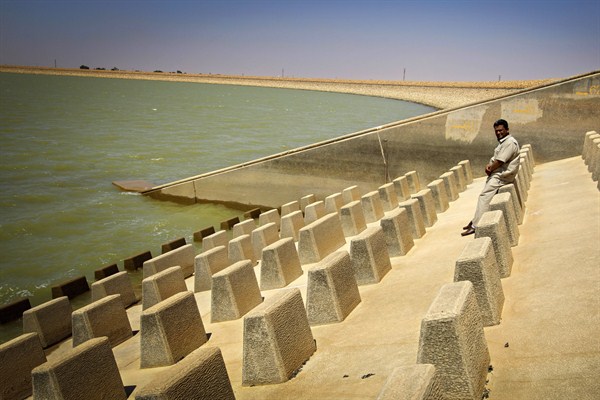With water scarcity increasing political tension and threatening economic instability in countries across the world, transboundary water disputes often become highly charged and bitterly divisive. A prominent example has been the Nile basin in northeast Africa, where the nations sharing the Nile’s waters have for years sparred over their usage allotments amid concerns that upstream countries may interfere with water flow into downstream countries. Most recently, the region’s flashpoint for transboundary water conflict has been Ethiopia’s construction of the Grand Renaissance Dam, which within several years will stretch across the Blue Nile at the Ethiopian-Sudanese border. The controversial project has drawn upstream Ethiopia into a high-profile diplomatic conflict with downstream Sudan and Egypt, with tensions subsiding slightly only after a series of hard-fought negotiations over water access. This attempt to address a major water dispute peacefully is impressive in a region where downstream countries have previously threatened war upon upstream countries over access to Nile waters.
Now, with the recent mapping of the region’s other major water source, the extensive groundwaters of the Nubian Sandstone Aquifer, the region has a chance to once again offer a compelling case study for international water diplomacy in the 21st century. This spring, three of the four nations overlying the vast Nubian Sandstone waters—Chad, Egypt and Sudan—agreed to continue coordinating their pumping of the groundwaters and share management responsibilities for this transboundary resource. While hailed as a triumph of collaboration over confrontation, the joint development effort has also been met with skepticism, particularly given the region’s volatile political and security climate. In particular, mounting political chaos in Libya, the fourth country sharing the aquifer, could sink regional efforts to ensure the sustainable development of this vital shared resource.
The estimated amount of accessible water ranges wildly, from 150 million cubic meters to 8.8 trillion cubic meters.* But even at the lower end of that range, the Nubian Sandstone Aquifer remains a virtual liquid gold mine located under one of the driest parts of Africa. Like many major global aquifers, this underground reservoir spreads beneath a huge geographical area, in this case more than 2 million square kilometers, or four times the size of Texas. It also stretches under the four countries’ remote border regions, making it difficult for any one of them to make territorial claims on the water.

